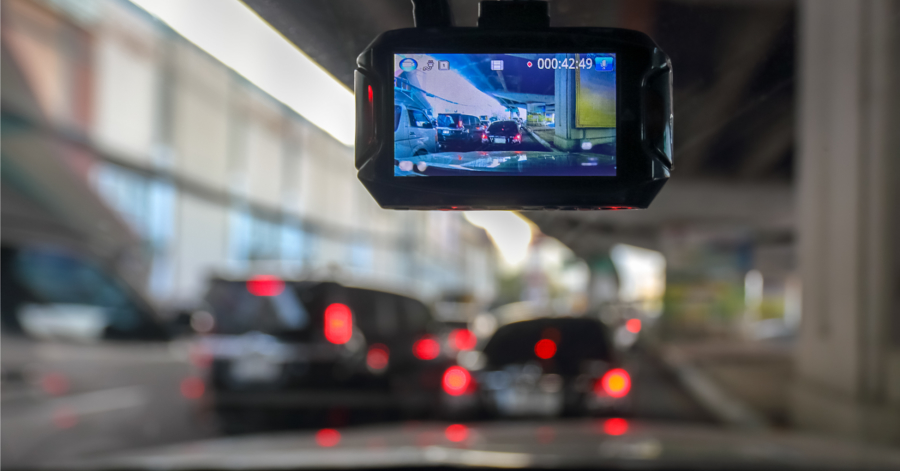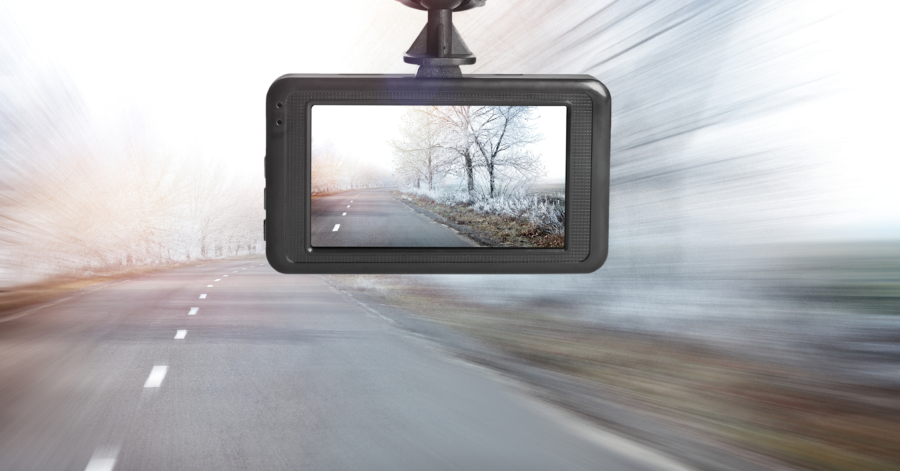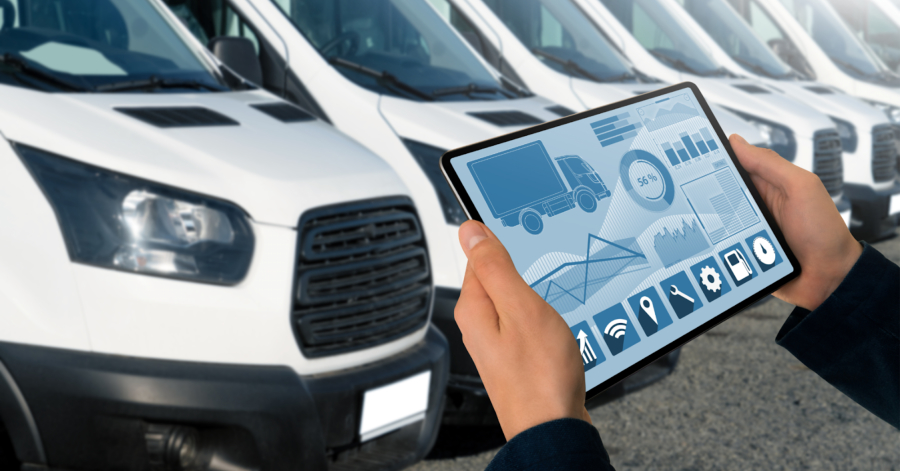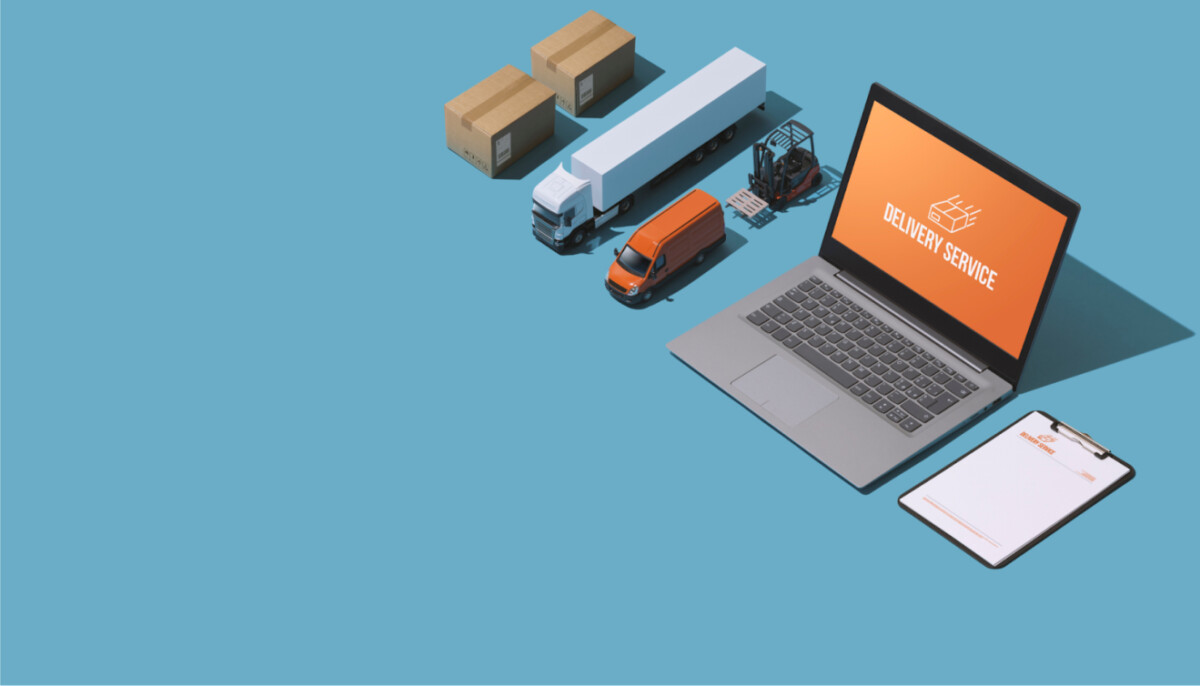In the fast-paced world of ecommerce, the efficiency and security of logistics operations are paramount.
Fleet camera systems have emerged as a game-changer, offering innovative solutions to modern-day delivery and asset management challenges. This technology enhances the safety and monitoring of fleet vehicles and plays a crucial role in streamlining operations and improving customer satisfaction.
This article delves into the intricate world of fleet camera systems, exploring their significance in e-commerce logistics. From providing real-time tracking to ensuring the security of goods in transit, these systems are redefining how ecommerce businesses manage their fleet operations. Whether you’re a small business owner or a logistics manager at a large corporation, understanding the
Understanding Asset Tracking Systems in Ecommerce
![]()
Asset tracking systems form the backbone of efficient ecommerce operations, ensuring that every product reaches its destination safely and on time. At the heart of these systems are fleet camera technologies, offering a multi-dimensional approach to tracking and managing fleet vehicles. These systems are not just about keeping an eye on the location of trucks and vans; they provide a comprehensive solution for monitoring driver behavior, vehicle health, and route optimization.
At its core, an asset tracking system integrates various technologies, including GPS, telematics, and fleet camera systems. This integration offers a real-time view of logistic operations, significantly reducing the risks associated with transportation, such as delays, theft, or accidents. The fleet camera systems, with advanced features like high-resolution video recording, night vision, and motion detection, extend beyond simple tracking. They empower businesses with data-driven insights for making informed decisions about their fleet management strategies.
In ecommerce, where timing and reliability are crucial, these systems ensure that businesses can keep their promises to customers. By providing detailed insights into vehicle routes, stoppage times, and delivery schedules, fleet camera systems play a pivotal role in enhancing the overall efficiency of the supply chain. This boosts customer satisfaction and builds trust and reliability in the brand.
The Importance of Asset Tracking in Ecommerce
![]()
The importance of asset tracking in ecommerce cannot be overstated. It’s a critical component that directly impacts customer satisfaction and business efficiency. In the age of instant gratification, customers expect timely and accurate delivery of their purchases. This is where fleet camera systems come into play, providing a crucial layer of transparency and accountability.
Fleet camera systems enable businesses to monitor their vehicles in real-time, ensuring that goods are transported safely and efficiently. These systems provide invaluable data such as vehicle speed, idle times, and even driver behavior, all of which contribute to optimizing delivery routes and schedules. This monitoring level helps reduce fuel costs, improve delivery times, and minimize the risks of late or failed deliveries.
Moreover, the footage captured by fleet cameras serves as an essential tool for resolving disputes, verifying deliveries, and enhancing security measures. The recorded video can be crucial for investigations and insurance claims in accidents or theft. These capabilities make fleet camera systems an indispensable asset for any ecommerce business looking to bolster its logistics and customer service.
Fleet camera systems are more than just tracking tools; they are an integral part of a robust ecommerce strategy, ensuring that businesses stay ahead in online retail’s competitive and fast-paced world.
Integrating Fleet Camera Systems for Ecommerce Efficiency

Integrating fleet camera systems in ecommerce logistics is a step towards revolutionizing the industry. These systems bring a blend of technology and practicality to the forefront of ecommerce operations. By leveraging advanced camera technology, businesses can ensure higher efficiency in their supply chain and delivery processes.
Fleet camera systems provide a comprehensive view of transportation activities, offering insights beyond traditional GPS tracking. They enable businesses to monitor and analyze the conditions of vehicles, track delivery routes, and ensure the safety of both the drivers and the products being transported. This level of oversight is crucial in identifying areas for improvement in logistics management, potentially leading to significant cost savings and enhanced operational efficiency.
Another critical aspect of these systems is their role in improving driver accountability and performance. By monitoring driver behavior, fleet camera systems can help reduce instances of reckless driving, increasing road safety and reducing the likelihood of accidents. This protects the company’s assets and builds a reputation for responsible and reliable delivery services.
Furthermore, the data collected by fleet camera systems can be used for predictive analytics and proactive maintenance scheduling. This means ecommerce businesses can anticipate potential vehicle breakdowns and schedule maintenance activities accordingly, reducing downtime and ensuring consistent delivery performance.
Integrating fleet camera systems in ecommerce logistics is a technological upgrade and a strategic move towards more intelligent, safer, and more efficient operations. For those exploring the latest fleet camera technology, check out Gofleet’s high-tech multi-camera solution for fleets.
Top Fleet Camera Systems for Ecommerce Logistics

Choosing the right fleet camera system is pivotal for ecommerce businesses aiming to optimize their logistics and supply chain management. The market offers a range of designs, each with unique features tailored to different business needs. Here, we’ll highlight some key attributes when selecting a fleet camera system.
Firstly, high-quality video capture is essential. Systems offering high-resolution footage provide more precise insights into road conditions, driver behavior, and potential incidents. This clarity is crucial for accurate analysis and decision-making. Night vision capabilities are also essential, especially for businesses that operate round-the-clock deliveries.
Secondly, consider systems with advanced features like motion detection, GPS integration, and real-time alerts. These features enable proactive management of the fleet, enhancing security and efficiency. Motion detection can alert operators to unauthorized activities, while GPS integration helps precisely track vehicles, ensuring timely and efficient deliveries.
Another essential feature is cloud storage and easy accessibility of footage. Cloud-based solutions offer the advantage of remotely accessing video data, vital for real-time monitoring and quick response to incidents. It also simplifies storing and retrieving large volumes of video data, making it easier to manage and analyze over time.
Lastly, scalability and integration capabilities are crucial for growing businesses. A system that can easily integrate with other logistics and tracking tools and scale according to the expanding fleet size offers long-term value and adaptability.
The best fleet camera system for your ecommerce business should offer high-quality video, advanced features, cloud accessibility, and scalability to meet your specific logistical needs.
GPS Fleet Management & Asset Tracking Solutions in Ecommerce

Integrating GPS technology with fleet camera systems marks a significant advancement in asset tracking and fleet management solutions for ecommerce. This combination offers an unmatched level of precision and control over logistics operations.
GPS technology plays a pivotal role in the real-time tracking of fleet vehicles. It provides exact location data for route optimization, delivery schedules, and transit time reduction. When combined with fleet camera systems, businesses gain a comprehensive view of their operations, encompassing their vehicles’ location, condition, and usage.
This integration is particularly valuable in managing large fleets where efficiency and timing are critical. Ecommerce businesses can monitor live feeds from fleet cameras, assess traffic conditions, and make informed decisions about route changes or delivery schedules. This real-time information helps avoid delays and ensure customers receive their orders as promised.
Furthermore, the data gathered through these systems can be used to analyze trends and improve future logistics planning. Insights into common route delays, frequent stoppages, and driver performance can guide better fleet management practices. This proactive approach to logistics management translates into improved customer service, reduced operational costs, and enhanced competitiveness in the ecommerce market.
GPS fleet management and asset tracking solutions, empowered by fleet camera systems, are indispensable tools for any ecommerce business looking to optimize its delivery and logistics operations. They offer critical insight and control in today’s fast-paced ecommerce environment.
Conclusion

In the rapidly evolving ecommerce landscape, fleet camera systems have emerged as a cornerstone for enhancing delivery and logistics management. From providing real-time tracking and monitoring of fleet vehicles to optimizing delivery routes and ensuring the safety of goods and drivers, these systems represent a significant technological leap in asset tracking and fleet management.
Integrating fleet camera systems with GPS technology provides ecommerce businesses with a powerful tool for managing their logistics operations more efficiently and effectively. By enabling better route planning, driver accountability, and proactive maintenance, these systems enhance customer satisfaction, reduce operational costs, and improve overall business performance.
As e-commerce continues to grow and evolve, the importance of robust logistics and asset-tracking systems cannot be overstated. Investing in the right fleet camera system is not just a technological upgrade but a strategic move towards more innovative, efficient, and competitive operations in the digital marketplace.
Frequently Asked Questions
How do fleet camera systems enhance ecommerce logistics?
Fleet camera systems enhance ecommerce logistics by providing real-time tracking, monitoring driver behavior, optimizing delivery routes, and ensuring the safety of goods in transit.
What are the key features to look for in a fleet camera system?
Key features include high-resolution video capture, night vision, motion detection, GPS integration, real-time alerts, cloud storage, and scalability.
Can fleet camera systems improve driver safety?
Yes, by monitoring driver behavior and providing insights for training, fleet camera systems can significantly improve driver safety and reduce the risk of accidents.
How do fleet camera systems contribute to customer satisfaction in ecommerce?
These systems ensure timely and accurate deliveries, provide transparency in shipping, and help resolve disputes, thereby enhancing customer satisfaction.
Are fleet camera systems beneficial for small ecommerce businesses?
Absolutely, fleet camera systems are scalable and can be highly beneficial for businesses of all sizes by improving logistics efficiency and reducing operational costs.
How does GPS integration enhance the capabilities of fleet camera systems?
GPS integration provides precise location tracking, aids in route optimization, and helps in making informed decisions for timely deliveries.
Can fleet camera systems help in reducing operational costs for ecommerce businesses?
Yes, by optimizing delivery routes, improving driver performance, and reducing idle times, these systems can significantly lower fuel costs and operational expenses.
How important is cloud storage for fleet camera systems?
Cloud storage is crucial for remote access to data, ease of management, and analysis of large volumes of video data for informed decision-making.
Do fleet camera systems offer real-time monitoring capabilities?
Yes, they provide real-time monitoring of fleet vehicles, which is essential for dynamic route management and immediate response to incidents.
Can these systems be integrated with other logistics and tracking tools?
Yes, most modern fleet camera systems are designed to integrate seamlessly with various logistics and tracking tools for comprehensive fleet management.
How do fleet camera systems aid in predictive analytics?
By collecting data on vehicle usage and performance, these systems enable businesses to anticipate maintenance needs and optimize fleet operations.
Are there legal considerations to using fleet camera systems?
Yes, businesses must comply with privacy laws and regulations regarding the use of surveillance and tracking technologies.
How do fleet camera systems
They can potentially lower insurance costs by providing evidence in case of accidents and encouraging safer driving behaviors.
Can these systems track environmental conditions during transit?
Advanced systems can monitor conditions like temperature and humidity, which is crucial for the transport of sensitive goods.
How do fleet camera systems enhance route planning?
They provide real-time traffic data and historical route performance, enabling more efficient route planning and scheduling.
Can these systems help in resolving delivery disputes?
Yes, video footage can be used as evidence to resolve disputes related to delivery times, conditions, and handling of goods.
How user-friendly are fleet camera systems for operators and managers?
Modern systems are designed with user-friendly interfaces for easy operation and analysis by fleet operators and managers.
Do fleet camera systems require professional installation?
While some systems may require professional installation, others are designed for easy setup and can be installed by the users themselves.
How do these systems handle data security and privacy?
Fleet camera systems use encryption and secure storage methods to protect data privacy and security.
Can fleet camera systems be customized to specific business needs?
Yes, many systems offer customization options to cater to the specific needs and requirements of different ecommerce businesses.




